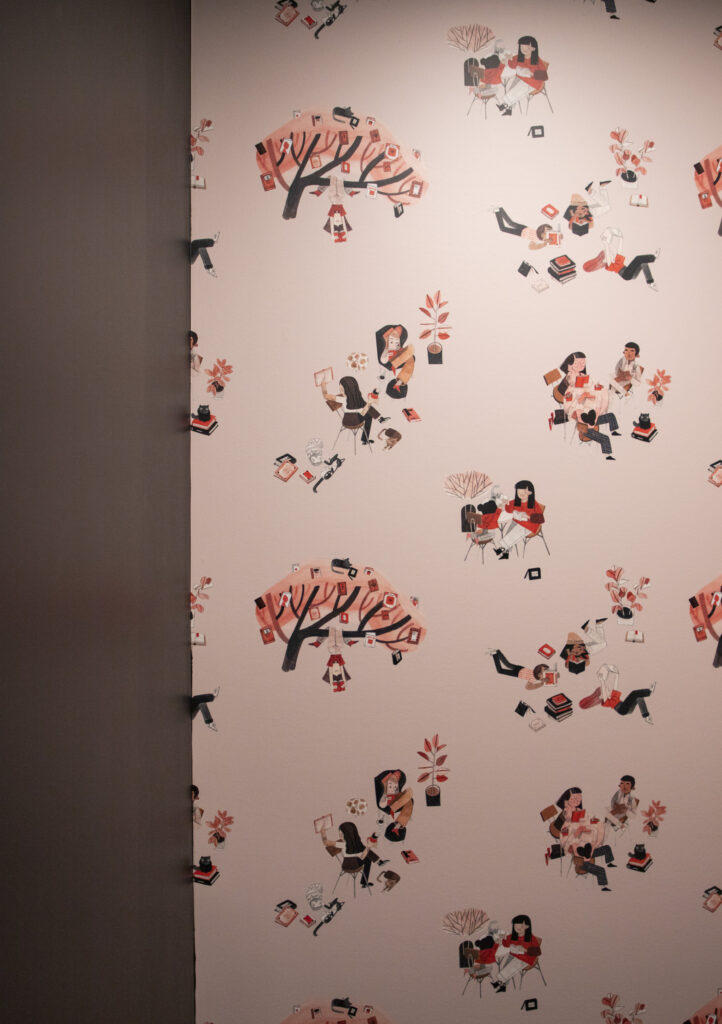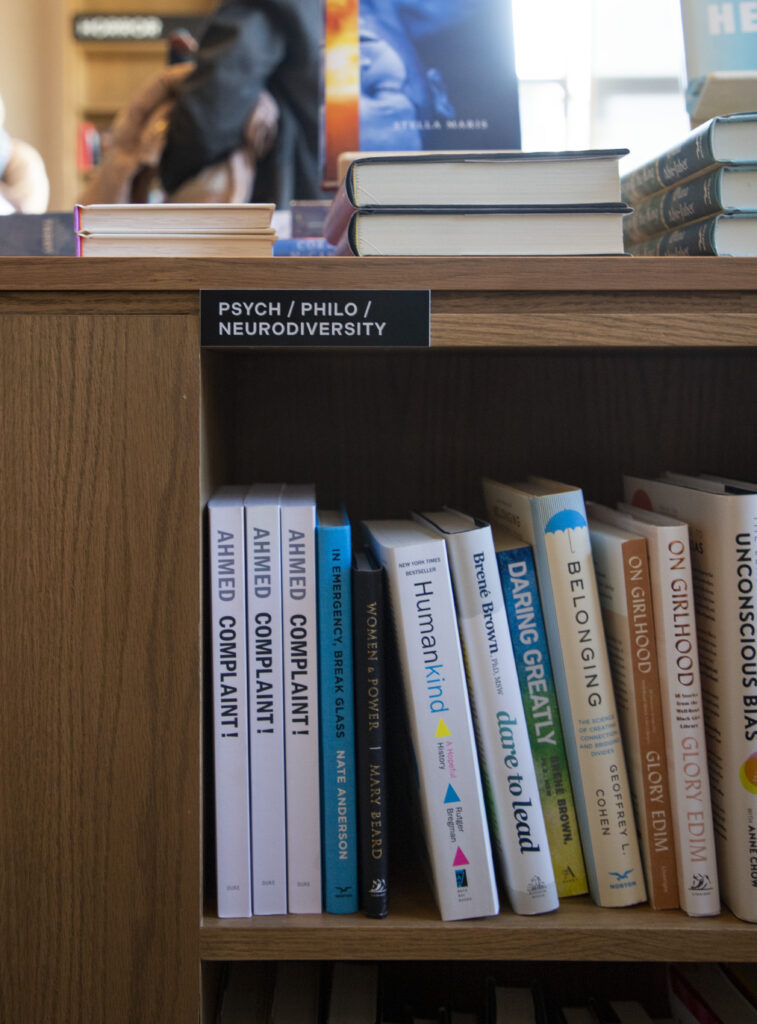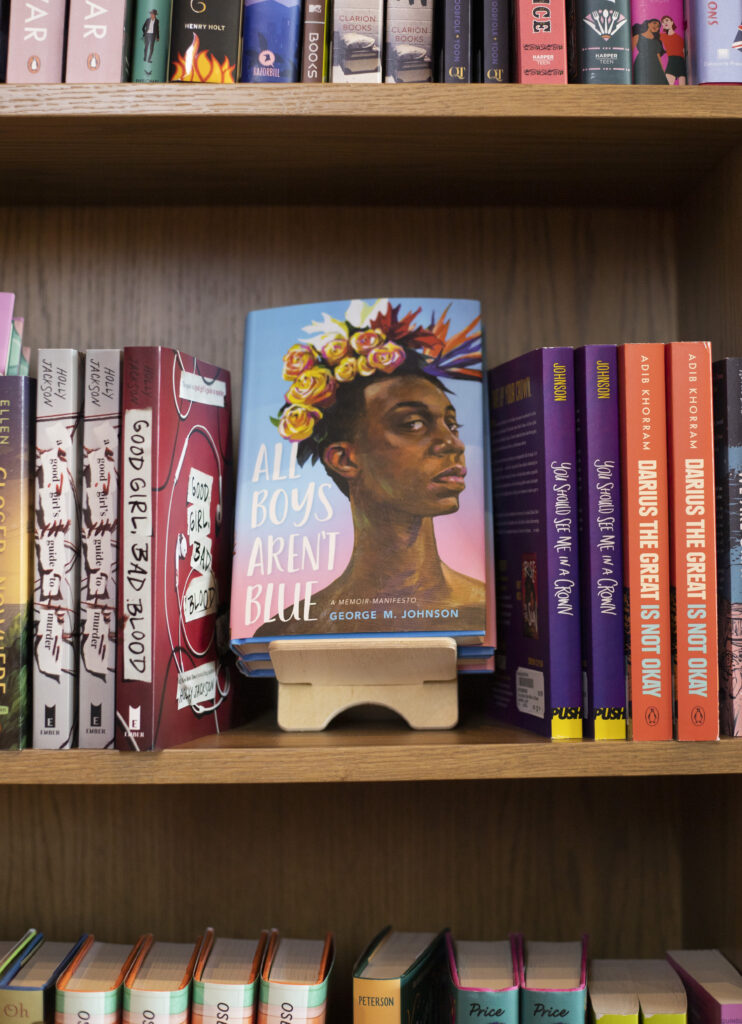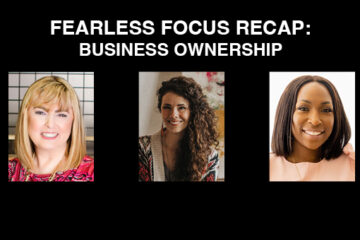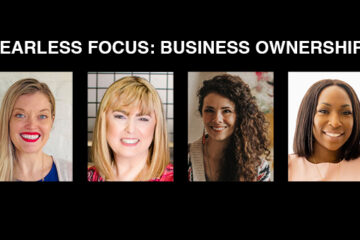Story and photos Emily Kestel, Fearless editor
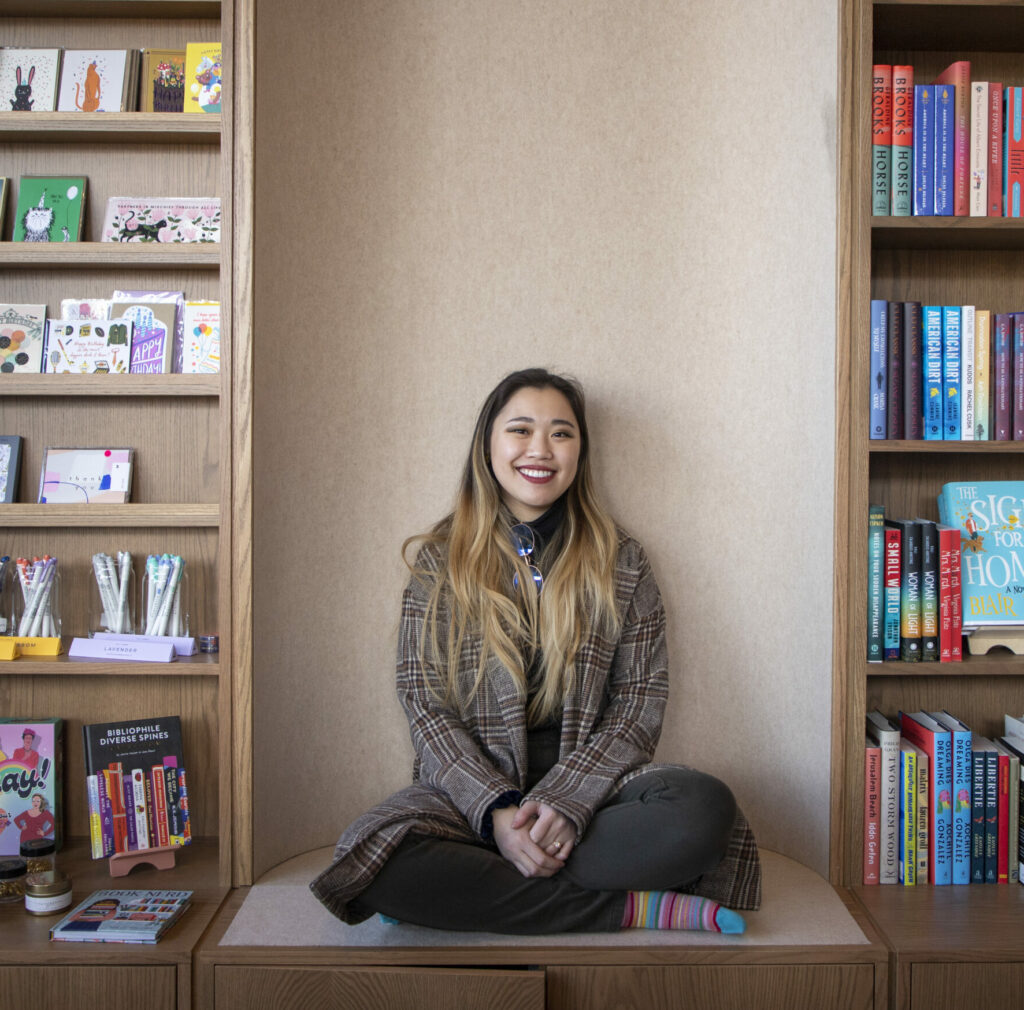
Age: 27
Hometown: Shawnee, Kan.
Education: Drake University, bachelor’s in painting and graphic design
Family: Husband, Gooi
Hobbies: Planning, reading
Rest assured that when you walk into the new Reading in Public bookstore at 315 Fifth St. in West Des Moines’ Valley Junction, everything – down to the last speck of color on the counter – has been well thought out.
Linzi Murray, who has a background in design, has dreamed of opening the bookstore since 2021. Her vision for the store is inspired by different elements and displays throughout her favorite local bookstores in Brooklyn, N.Y.: Books are Magic, Center for Fiction and McNally Jackson.
Born from Murray’s lifelong love of books and her philosophy of practicing radical empathy, Reading in Public places a strong emphasis on mental health and social advocacy.
Wanting others to feel included, as if they were in their own home, is at the heart of Reading in Public, Murray said.
The color palette – inspired by the sunset in the desert – is made up of earthy and warm pinks. The red oak shelving and cabinets, along with the speckled quartz countertops, were the result of dozens of tweaks in the color selection process.
But what really sets Reading in Public apart is the visual representation of different identities, whether through custom art or the purposeful display of the books themselves.
Reading in Public employs nine people, including Murray, all of whom are women or nonbinary. As far as she knows, Reading in Public is one of only two Asian-owned bookstores in the Midwest.
We caught up with Murray to talk about the store and the experiences she’s had leading up to its opening. The following interview has been edited and condensed for clarity.
Tell me about your background and what brought you to where you are today.
Right after I graduated from college [Gooi and I] moved to New York City for four years. In New York, there’s stuff going on all the time. People are making things all the time. You can’t help but be inspired by it. It’s like it’s in the air. It’s contagious – well, that’s not a good word to use anymore; we were in New York for COVID.
But you learn how to craft experiences and how impactful they could be or have the potential to be. In this role, that translated to “What do I love? What do I not like? What are my rituals?”
To me, bookstores feel like going home. When I first started with this idea, the words that I used a lot were “wander” and “gather.” When I peruse shelves in bookstores, I go into a contemplative, meditative state where I’m at peace with everything. [I want to] give other people that, so they can feel instinctively that this is a place where you come in and feel safe and comforted.
What drew you to Valley Junction?
I wanted to be somewhere that I would feel like I’m joining the community. Des Moines as a whole is really good about that. It’s small enough that everybody knows what’s going on, but not too small where I feel like I’m suffocating. I love the idea of being somewhere historical. I’m in a new building, of course, but all of the business owners here know that they’re part of this historic foundation.
Also, this neighborhood was the closest I could get in the Des Moines area to what Brooklyn kind of feels like. Think historic, picturesque, tree-lined streets. We lived right off one of the main roads, so we had all small businesses [nearby]. Just going out on a Saturday, walking up into your favorite places and trying new places.
What led you to the name of Reading in Public?
When I started to pursue opening the bookstore, I reread “The Shadow of the Wind” by Carlos Ruiz Zafon, my favorite book of all time. I was writing out a caption on Instagram and I put all the hashtags with the caption, and one of them was #readinginpublic and something told me to pause. I actually thought about it a while, and I started making logo iterations if it were the name. And it stuck. I knew on a gut level that it was the right name. It could be a status on Facebook, [like “Emily is reading in public.”] It’s also an invitation. Some people might feel weird about eating by themselves in a restaurant or going to a bar and reading. Some people just need to be reminded that that’s totally fine. It’s not weird or anything.
When did you decide that you wanted to open up a bookstore?
July 2021. Readers tend to have the “Oh, it would be nice to open a bookstore someday” kind of thing. I remember having conversations with friends and starting to think about that idea. And then of course, the next week I’m obsessively like “I’m doing this.” It came about really because of the pandemic and suddenly being incapable of going to bookstores. I realized that I felt like a part of me was missing because I couldn’t go to any. I’ve always known I love bookstores, but actually getting depressed and feeling cut off from something so essential to me, I realized that I can’t live without them.
I started my Bookstagram in 2020, so I was already in the book sphere. When things started opening back up, Gooi and I went all around New York with a backpack full of books and just taking pictures of them. I would do book reviews, and it just became a way of life. In 2019 I read 83 books. By 2020 it was 301. It has steadily stayed between 200 and 300 since then.
I love learning. I love understanding new things. I read anything if it’s interesting. I’m also very empathetic, and reading makes me really tune in to other people really quickly. I want to be known for my curation and recommendations here.
What have been the biggest challenges you’ve faced in opening up your own business?
The long process. All of the construction was paused for three months because I wasn’t able to get a loan.
But also on the personal level, having to learn how to adapt when things are not going right. Of course there’s times we don’t have control and where things go wrong. I’m at the mercy of other people and I can’t do anything about it. But within the circumstances, what do I do? What can I do? When I found out we couldn’t open in 2022 at all, I had to learn to not let it knock me down. And just be like, OK, that’s the situation, reassess, new plan.
You hold several intersecting identities as a young, Asian woman. Has that played a role in what you have or haven’t experienced throughout this process?
I’ve always had the personality of “I’m gonna do what I want.” I went into everything having such a clear vision of what I wanted. I don’t succumb to any limitations.
I’m learning how to be a boss of people, which is very bizarre to me. Even though I’ve always been a natural leader, it’s still very intimidating. Some people’s livelihoods depend on me now. I tell my baristas, “Go wild, do whatever you want. If you have ideas, tell me.” Leading with empathy is more heavily associated with women, but it’s also just a decent human thing that a lot of people seem to lack for some reason. I want to have kids and be a mom soon. I’ve told my staff that it’s OK to be human.
My motivation of wanting people to feel at home derives from a traumatic childhood and wanting so desperately to feel understood and validated and accepted. I’ve always known that’s my life goal, being that for other people.
We focus on social justice initiatives and standing up for other people, because this world is just ridiculous. In the job applications, I asked, “What kind of causes do you care about?” because everybody should care about something here. I want to do the most good we can as a collective.
This is a queer safe space. I’ve already done partnerships with the Iowa Abortion Access Fund. There’s also that toeing the line of “Do I speak my values as a business or not? Do I stay neutral?” But I feel like owning a bookstore or loving books, there’s not going to be neutrality because my whole thing with books is that it cultivates empathy. So, no, I’m not going to be quiet. How do you stay silent when you’re surrounded by people’s stories?
“How do you stay silent when you’re surrounded by people’s stories?”
I do get nervous about being an Asian-owned business. When all the anti-Asian hate was happening in New York City in 2021, I was terrified for my life every day for the first time. I was scared to go outside, because acid was being thrown at Asian people from cars. There was an elderly woman who was set on fire. There was a woman who got thrown in front of a subway. I would text my best friend and say, “They killed another one of us.”
I’ve been assaulted on the subway, I’ve been threatened to be killed. People are being objectified all the time. People have screamed sexual things at me, even right next to Drake. Being a woman in this world, and being Asian, is having a target put on our back. People welcome me to my own country all the time. I’ve been here almost my whole life.
We are living in a white person’s world, where we have to make concessions all the time. We’re constantly reminded that it’s not our world. But that’s bull—-. I care about having books in other languages. I intentionally put Spanish books up next to the English ones because I want to indicate that English isn’t the default, necessarily.
My husband’s and my kids will be 100% Chinese. I want a better world for them where they don’t have to fear for their lives for looking the way they do.
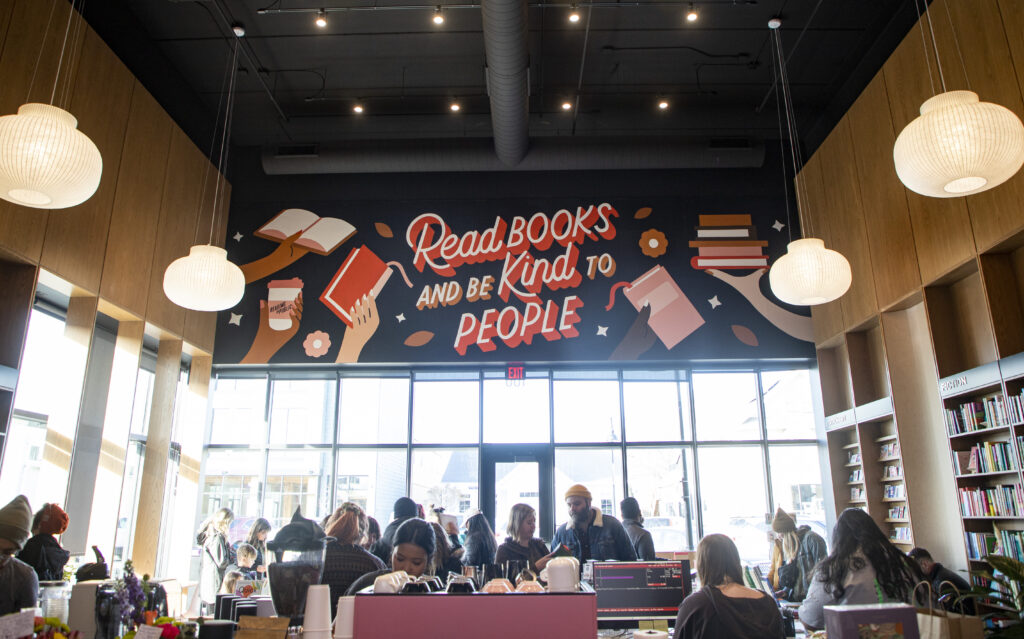
Tell me about the mural in the store that says, “Read books and be kind to people.”
The muralist is Steffi Tsai. Her business is very, very popular. I had her fly out from Brooklyn, N.Y. She’s also Asian American. It really matters to support each other.
Reading cultivates empathy. In this world that can be so cruel, where everybody feels isolated, it’s just a reminder that we need softness and empathy, and we need to be good to each other.
We’re getting better where there’s less stigma to have mental health conversations. Life is really, really hard. It’s OK to have mental health things, because how can you not? I have experience with anxiety and depression. I’m now on meds. My father, who I loved a lot, was an alcoholic, so I was really nervous to go on meds for a long time. He passed away when I was 20. I have major abandonment issues with my adoption.
I had childhood depression from 11 to 14. I was severely depressed and suicidal. I didn’t want to go to therapy at that time because I wanted to prove to myself that I could get out of it and I could do it. It wasn’t the easiest route, but I needed that for myself, just to know that I had that strength to do it.
I got really involved with the adoptee community, because I don’t want Chinese adoptees now to feel that same isolation, hurt, abandonment and worthlessness. I want to be a source of understanding and a source of validation and safety for other people.
What advice would you give to someone looking to open a brick and mortar business right now?
I think it’s all about connections that you make with people. In Iowa, there are quite a few resources, but the best way to do it is to connect with other people who have been through it. I couldn’t have done any of this without the many, many people who have been involved with this process.
Fundamentally trust yourself and keep pursuing good. Keep a firm understanding of why you’re doing what you’re doing. Because when you feel like everything’s going wrong and you want to quit, you can’t forget what you can be for the community.
What have you learned about yourself throughout this process?
I think the thing I’ve always been the most proud of myself is that I make things happen, but now it’s on such a scale that other people are going to see it too, and other people will benefit from it and have the space to come to. It’s less of a lesson that I’ve learned and more that this is the effect of what I, as one person, can do for others.

